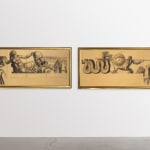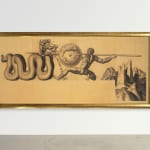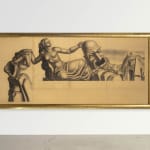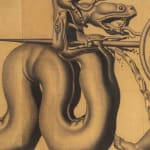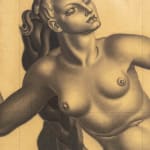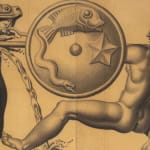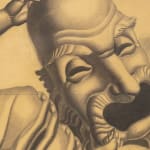

Jean Dupas





Jean Dupas French, 1882-1964
Titled "Hercules combating the Lernaean Hydra" on verso
Width: 97.24 in.
Height: 43.89 in.
Further images
In 1927, the Mayor of Bordeaux, Adrien Marquet, undertook a project to rebuild the “Bourse du Travail” (the trade union center of Bordeaux) in honor of the city’s factory workers. This construction project was part of a larger architectural plan ambitiously designed to give the city the allure of Florence during the time of the Medici, and was spearheaded by architect Jacques Welles. By 1934, the new “Bourse du Travail” was starting to take shape and in 1938 it was officially dedicated on the symbolic date of May 1st, France’s Labor Day. However, the interior of the palatial structure was still far from completion and the architect recruited a group of local artists, some of whom were already internationally established, to assist with this significant task.
A close friend of Jean Dupas, the Parisian sculptor Alfred Janniot was entrusted with the façade of the building, and both artists had recently completed a project for the famous ocean liner Normandie.
As a leader of the so-called “Ecole de Bordeaux,” Jean Dupas was at the height of his career. His most recent accomplishment, his extensive work in the luxurious First Class salon of the Normandie had won him great praise, and he was tasked with the most ambitious part of the Bourse du Travail project. Dupas was entrusted with the completion of the apse and the conference hall with glass windows facing the main wall. The subject matter for the apse, which had been chosen in 1937, was to be the glorification of the city of Bordeaux, “La gloire du Bordeaux,” and as specified in the contract, was due to be completed by 1938.
However, the mayor had to allow Dupas to finish a project for King Carol of Romania, a fresco for the Silver Salon in the Royal Palace of Bucharest, which had been on hold since 1935. One of his most impressive commissions, Dupas’ Silver Salon work was to consist of a giant ceiling fresco which, in accordance with the King’s wishes, depicted the Chariot of the Sun and was inspired by Michelangelo’s Sistine Chapel ceiling. Unfortunately, due to numerous financial and political problems, including the overthrow of King Carol and the beginning of World War II, prohibited the completion of this project. Consequently, Dupas was able to dedicate himself fully to the apse of the Bordeaux Bourse du Travail, which he completed around the end of 1939 or the beginning of 1940.
Provenance
Acquired directly from the family of the artist.
Literature
Referenced in the artist’s archives.
